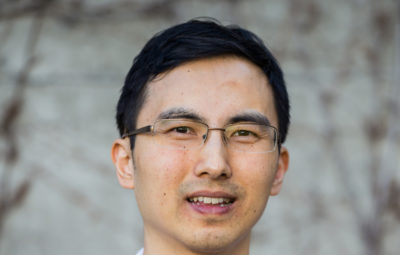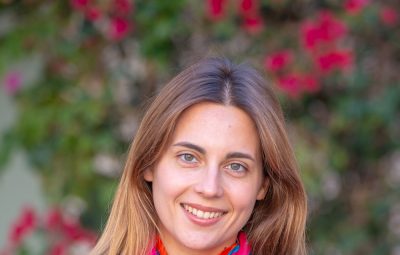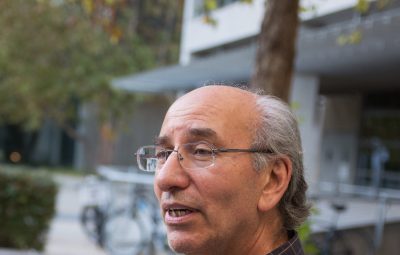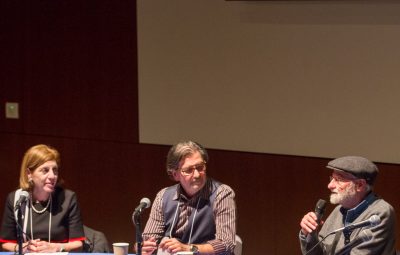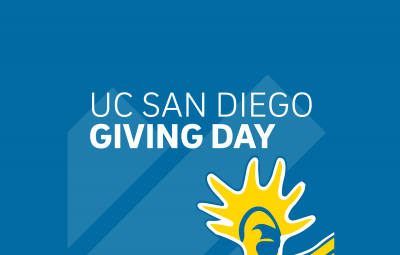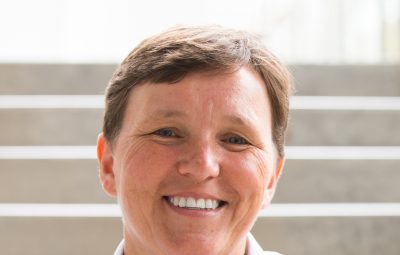This year’s ACM CHI Conference on Human Factors in Computing Systems — more commonly known as CHI — took place from April 21 to 26 in Montreal. Highly regarded among the human-computer interaction community, the 2018 conference drew a crowd of over 3,300 researchers from across the globe.
“It is like the human-computer-interaction community at large getting together, and not everybody goes every year, but you get a sense for the breadth of the community,” says Adam Rule, a Design Lab member and Cognitive Science PhD graduate. “Anything going on [in] the community, you can have a niche for there, whether it’s like design fiction in science fiction about what the future is gonna look like, whether it’s utopian or dystopian all the way to very specific details of menu structures.”
 While the conference is known for its enormous size, some attendees are also able to experience CHI on a smaller scale. Before the conference, Design Lab graduate student Ailie Fraser took part in a workshop called “Sensemaking in a Senseless World,” which had approximately 50 participants.
While the conference is known for its enormous size, some attendees are also able to experience CHI on a smaller scale. Before the conference, Design Lab graduate student Ailie Fraser took part in a workshop called “Sensemaking in a Senseless World,” which had approximately 50 participants.
“The people who showed up were people who investigate sensemaking in all kinds of different domains, basically anything that requires making sense of information. So some of it was helping people find answers to questions online … Some of it was more targeted things like disaster relief and how to help people find the right information quickly,” Fraser says. “It was neat because I kind of got to see that all these people are kind of working on similar problems but in totally different domains that I wouldn’t necessarily go to the talks for or read about, but there’s a lot of overlap.”
The Design Lab presence at CHI has grown in the last few years. “There were a lot of people at the Design Lab lunch, where we invited current people and alumni, and it was great that most days, there were one or two talks from Design Lab people going on,” says Rule. “So you could be like, ‘Oh, what’s the talk for today, I need to make sure I go to hear and support the Lab.’”
Rule, Professor Jim Hollan, and Professor Aurelien Tabard won an honorable mention for their work on “Exploration and Explanation in Computational Notebooks.” Fraser, along with fellow graduate students Tricia Ngoon and Ariel Weingarten, Professor Scott Klemmer, and Mira Dontcheva of Adobe Research, also received an Honorable Mention for their paper on “Interactive Guidance Techniques for Improving Creative Feedback.”

(Pictured Left to Right: Ailie Fraser, Tricia Ngoon, and Ariel Weingarten)
Ngoon and Fraser co-presented their paper at the conference. Although Ngoon has attended CHI in the past, this was her first year as a presenter.
“There was a little more pressure, definitely, where you have to prepare your talk and practice and everything, so it was different [from just being an attendee] in that sense. But it also felt good because you could introduce yourself that way, you could say, ‘I’m presenting this paper at this time on this day, and it’s about this,’” Ngoon says. “Last year, I didn’t really have a solid research direction yet, so a lot of it was just kind of like meeting different people, which is also cool, but it wasn’t as fruitful as being able to have discussions about your research. This time I felt more of a purpose for me being there, because I was able to present my work.”
One of Ngoon’s favorite pieces of advice from the conference came from Klemmer. “Before we presented, he said, ‘Because it’s the CHI community, there’s lots of different people there and you should try to direct certain parts of your talk to certain people.’ Essentially, place some personas in the audience and make your talk directed to those people,” explains Ngoon. “And I thought that was really an interesting way to look at it. Because the field is so broad, sometimes it’s hard to get a sense of what your audience might know and what their background is, so in the interest of using design thinking, placing some personas in the crowd and tailoring your talk that way, I thought that was really good advice, and it helped make our talk more interesting to a broader audience that came.”
However, while the incredible size of the event is great in the diversity aspect, it can also get overwhelming. This year was Fraser’s third time at the conference, and she has developed some CHI know-how over the years.
“I learned that you shouldn’t and you can’t go to all the talks or all the sessions. Because it’s a four-day-long conference, and there are sessions of talks throughout every single day, if you actually go to every session you’re just gonna get so tired,” Fraser says. “That’s what I tried to do my first year and I just got totally burned out and stopped paying attention to talks, and so I’ve learned to pick and choose what I go see, and that the conversations I have with people outside talks are a lot of times the most valuable thing.”
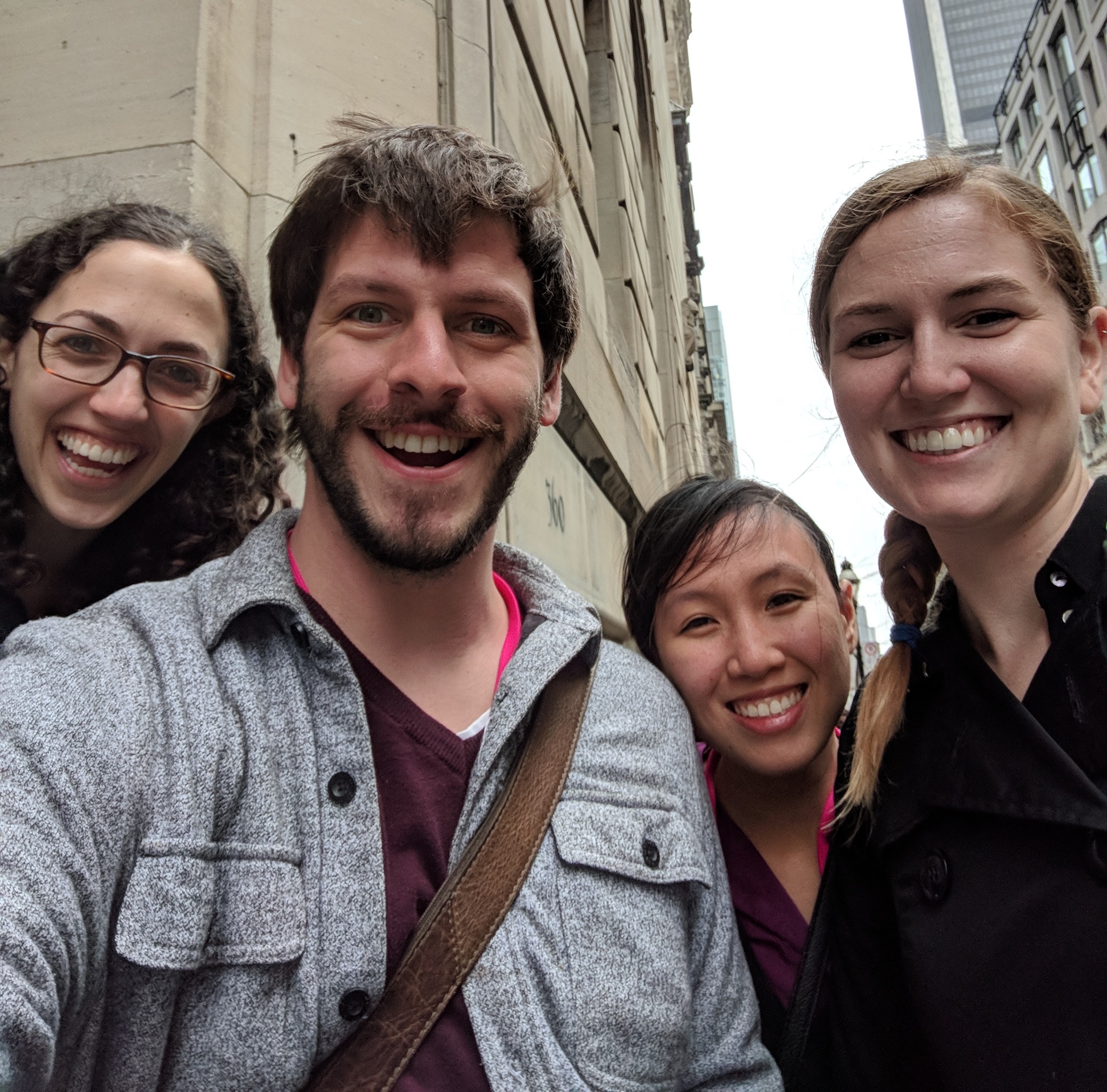
(Pictured Left to Right: Julia Cambre, Ariel Weingarten, Tricia Ngoon, and Ailie Fraser)
Fraser has some additional advice for CHI first-timers. “Cold-approaching someone to talk to them can be super scary, so one thing that helps is to have a buddy with you so you can go together to talk to someone because it’s a little less intimidating … Or if you see someone you know and they’re talking to a bunch of people you don’t know, that’s also a really good opportunity to meet people, because you can join in and be like, ‘Hey, how’s it going?’ and they’ll introduce you to the rest.” she says. “Don’t worry about having to try to network with everyone, either, because there’s way too many people at CHI … Another thing that I’ve started doing is whenever I meet someone new, I write it down, just in my phone in a note, so in the end when I’m thinking, ‘Oh, I didn’t have time to talk to that person’ or ‘I didn’t network enough’ I’ll look back at this list and be like ‘Oh, wow, I talked to all these people.’”
This year’s theme was “Engage,” and CHI continues to do just that. With the wide range of attendees, the conference encourages interaction between researchers in seemingly disparate domains.
“CHI is exhausting, but worth it,” says Fraser. “It’s a super broad community; everyone has totally different areas of focus, which both means that it’s important to find your own little niche and build your little sub-network of people that you see every time, but it’s also a great venue to go to a talk that is not even on your radar research-wise or talk to someone that you wouldn’t otherwise get to meet because you don’t go to any of the other same conferences.”

